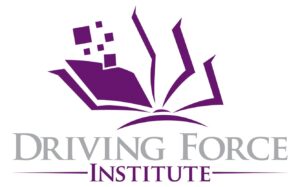Patrick Riccards is an agitator at heart, driven by a deep desire to build, create, and repair. Dissatisfied with the status quo, Patrick seeks big, audacious change, pushing the boundaries and embracing the challenges that come with transformation. His journey towards becoming a transformational leader has been marked by significant challenges, particularly in learning from failure and navigating setbacks. However, he firmly believes in failing fast and learning from mistakes to forge a path to success.
For Patrick, transformational leadership extends beyond simply leading change. It encompasses a laser-focused dedication to meaningful and sustainable improvement. It involves diagnosing shortcomings, identifying opportunities, and fearlessly pursuing what is possible.
One example of Patrick’s successful transformational leadership is his work with the Driving Force Institute. When faced with the foundation’s decision to abandon a project aimed at improving the teaching and learning of American history, Patrick recognized a major opportunity. He launched the Driving Force Institute, a platform focused on teaching history through short, provocative videos that made the subject relevant and interesting to today’s students. Today, Driving Force has produced nearly 500 films, reaching 43 million users, and even winning a Telly Award.
To stay up-to-date with the latest trends and innovations, Patrick immerses himself in information, not only within his own industry but also in other sectors. By observing successful ideas and learning from failures across various domains, he can replicate and adapt these concepts to drive innovation within his own organization.
Creating a culture of innovation and creativity is a priority for Patrick. He believes that all voices matter in the innovation process and encourages his team to contribute their ideas. To foster this culture, he provides incentives for staff whose ideas are implemented and empowers others to develop new initiatives. Patrick ensures that feedback from the team is incorporated into the decision-making process to include diverse perspectives and experiences.
Balancing the needs of stakeholders and shareholders is essential to Patrick’s approach to making business decisions. By maintaining a clear vision, strong metrics, and transparent communication, he believes the needs of both parties can be aligned, avoiding conflicts and ensuring the organization’s success.
When it comes to team building and talent management, Patrick prioritizes hiring individuals for their skills and potential rather than their ability to perform a specific job. He looks for people who share a commitment to the mission and can contribute to the team in unique ways. Furthermore, he actively coaches and develops team members, always hoping to have someone who can eventually take his place.
“Transformation is about doing the hard work, pushing too hard, and figuring out how to succeed despite all the challenges. It becomes a driving force.”
The success of transformation initiatives, according to Patrick, is measured by whether the objectives are achieved. While interim metrics guide the process, the ultimate goal is to deliver meaningful social change. Acknowledging failures, learning from them, and ultimately succeeding are vital components of Patrick’s approach to measuring success.
Resistance to change is a common challenge, often rooted in fear. Patrick believes that transparency, data, and honest feedback are effective tools for overcoming resistance. Education, inclusion, and bringing difficult conversations into the open help dispel fear and pave the way for change.
To ensure his organization remains agile and adaptable, Patrick emphasizes the importance of constantly looking to the future, staying ahead of the status quo, and being prepared to let go of initiatives that no longer serve their purpose. While honoring past successes, he prioritizes the organization’s ability to evolve and adapt.
Patrick’s commitment to his values and mission during transformation is unwavering. He believes that everyone in the organization should understand the “why” behind their actions, as it serves as a guiding light during challenging times. Every decision and resource allocation must connect back to the mission, reinforcing the organization’s commitment to its core values.


Incorporating sustainability and social responsibility is at the heart of Patrick’s business strategy. As a social entrepreneur, he focuses on selling ideas and creating positive change in communities and sectors. Patrick understands the importance of addressing social problems and offering viable solutions that make a difference. He recognizes that change can be challenging but considers it essential for the betterment of civil society.
For aspiring transformational business leaders, Patrick’s advice is rooted in self-belief. He emphasizes the importance of believing in oneself, the vision, and what is possible. Only by genuinely believing in their ideas and advocating for them can transformational leaders inspire others to follow.
Patrick Riccards stands as a shining example of a transformational business leader, driven by a relentless pursuit of improvement, a commitment to meaningful change, and an unwavering belief in what is possible. Through his agitator spirit, he continues to shape organizations and communities for the better, inspiring others to join him on the journey towards transformation.
“Change can take time, so one needs to have interim metrics to guide and course correct. But when you make a promise to drive meaningful social change, you need to deliver on it. And if you fail, you need to acknowledge it, learn from it, and succeed as a result of it.”


